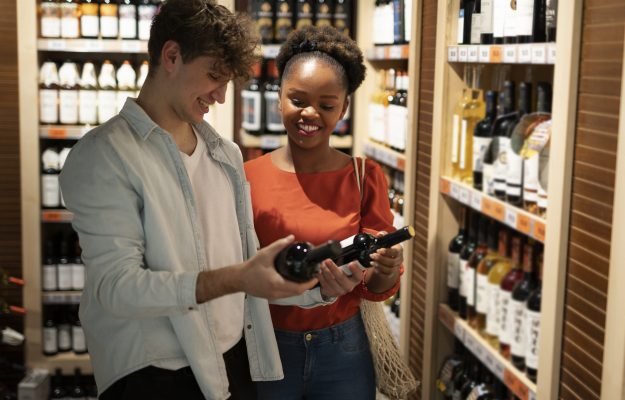Price list increases have slowed down sales of Italian wine in mass retail. During the first half of 2023, sales volume of still wines dropped to -4.6% and sparkling wines, -2%; that is, respectively, 316.8 and 41.6 million liters. Data for the first half of 2023 is from CIRCANA that revealed the numbers to WineNews first. However, turnover is growing, as still wines reached more than one billion euros (+2.9%), and sparkling wines 279 million euros (+5.9%). Obviously, average prices have increased, from 3.44 euros per liter for still wines (+7.8%) to 5.08 euros per liter for bottled still wines (+8.4%), and 6.70 euros per liter for sparkling wines (+8.1%) to 7.67 for Prosecco (+10.4%).
“The first half of 2023 felt the full impact of the first wave of price increases, and now we need to figure out whether there has been a second wave or not, and how the market could react. From now on, we will be using the same prices in comparisons between this year and 2022”, Virgilio Romano, C.S. Account Director of Circana, commented.
“The average price growth is the result of the average price increase, offset by consumers’ choices, who have adapted their spending to respond to inflation by buying less, choosing brands that cost less, changing stores and taking advantage of special offers. In this process inflation is inevitable, while the 8% we have reached is definitely lower than the average price list increases that mass retail chains have imposed. The result is an unavoidable reduction in volumes sold and a halt in price increases. From the point of view of companies, price increases were inevitable”.
Prices are soaring, and purchases are halting, but “the levels of wine consumption in Italy are still very high, and I don’t see a risk of them falling. Rather, approaching the wine sector could be a problem for the younger generation, but, except for rare occasions, for those who have no culture of drinking, there is not much to fear, for instance, from beer. The substitution process is complicated, as it does not simply depend on prices. The danger, for some denominations, is to “exceed” the reference price range. If positioning rises in the price pyramid, the number of potential consumers is automatically reduced. A denomination that goes from a lower price range to a higher one loses numerically - it is physiological. Those who position themselves at higher prices, instead, have nothing to fear, because it's not a small price difference that makes the difference”, Virgilio Romano concluded.
Copyright © 2000/2025
Contatti: info@winenews.it
Seguici anche su Twitter: @WineNewsIt
Seguici anche su Facebook: @winenewsit
Questo articolo è tratto dall'archivio di WineNews - Tutti i diritti riservati - Copyright © 2000/2025









































































































































































































